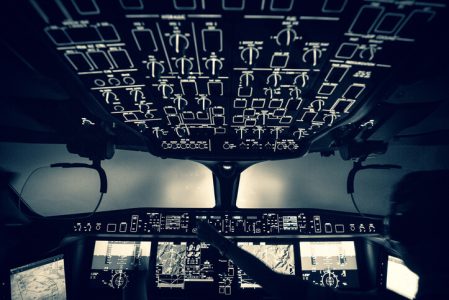Pilot training courses should warn about automation dependency
Do you remember the Asiana Airlines Flight 214 in 2013 that crashed into a seawall while trying to land at the San Francisco airport? That accident scared me to death because the cause of the crash was entirely pilot error, a disturbing fact when you consider that the777 was one of the most advanced and automated airliners in the world at the time (and still is). It did everything for the pilots except eat their lunch. Unfortunately, there was a breakdown in pilot training, and the Asiana crew did not understand how to fly the plane when the automation failed.
Fast forward to December of 2021; a 777 is involved in a serious accident that points to over-reliance on aircraft system automation. According to reports, the flight was scheduled to depart Dubai at 3 AM local time, en route to Washington DC. There were four pilots on board; all were sitting on the flight deck and would have assisted the pilot monitoring if they saw something that did not seem right.
On takeoff, they accelerated to rotation speed, but for whatever reason, the flight directors did not signal a climb for the pilot flying. It stayed exactly where it was in a level attitude. If it were me, I’d be thinking, ‘whoops, we set something up wrong – rotate anyway and figure it out on the 13-hour flight to DC,’ but this flight crew didn’t see it that way. They followed the Flight Director. They followed it until they ran off the runway going over 400km/hr. To reiterate, they were screaming down the runway and only rotated when it was clear that they were no longer on the runway.
It gets worse. The pilots rotate, so now they’re in the air, but they continue to follow the flight director, which is now trying to steer them back into the ground. They fly along at 75 feet AGL (less than the wingspan on the 777) and continue to build up speed, barely missing apartments and buildings full of people asleep in their beds.
Common sense takes over when they get to the coast and initiate a steep climb to their assigned altitude. However, instead of returning to Dubai to assess the damage from eating dirt at the end of the runway, they continued the 13-hour flight across the ocean.
The plane then flew to DC and back to Dubai, where it was finally grounded for four days while maintenance repaired the damage incurred during the initial takeoff in Dubai.
I have difficulty believing that even a student pilot would intentionally run a Cessna 172 off the end of the runway because the flight director was telling them to. Still, this is what happened to these pilots.
Since this flight, the airline sent a NOTAM to crewmembers, telling them not to touch the altitude window after landing. Some incoming pilots were in the habit of setting the altitude window to zero after landing to help the outgoing crew realize that they didn’t set the departure altitude yet. This was not necessarily a flight protocol, so not everyone was aware this was happening. But it does explain what might have been the contributing error on this flight. If the altitude window was set to zero, the flight director would have stayed “on the ground” all the way across the ocean. It was up to the pilots to recognize that something was wrong with the automation and to take over manually with basic stick and rudder skills that we should all have.
The problem is automation dependency and it’s a bigger problem overseas than it is here in the states. There, pilots are instructed to use the highest level of automation possible for whatever phase of flight they are in. No exceptions. That’s the way they train and that’s the way they fly.
But what happens when the automation fails or is set incorrectly? Disaster. Or near disaster in this case. This is not the first near-tragedy that automation reliability has caused with this airline (or others). The Asiana accident happened in 2013, and we’re still seeing this dangerous behavior almost 10 years later.
Pilots must step up their basic flying skills, regardless of who they fly for and what the company culture is. Without question, pilot training MUST include what to do if the automation fails or is set incorrectly. With my airline training years ago, the instructor would hand the PNF a note to set something up wrong or forget a callout, etc. The world could learn something from such sneaky training tactics.









